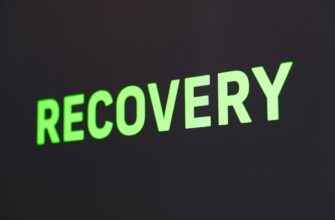💎 USDT Mixer — Your Private USDT Exchange
Mix your USDT TRC20 instantly and securely. 🧩
No sign-up, no data logs — just total privacy, 24/7. ✅
Ultra-low fees starting at just 0.5%.
- Why Account Recovery Matters More Than Ever
- Step-by-Step Account Recovery Process
- Critical Preparation for Successful Recovery
- Troubleshooting Common Recovery Roadblocks
- Password Creation Best Practices
- Frequently Asked Questions (FAQ)
- What if I no longer have access to my recovery email?
- How long does account recovery usually take?
- Why does my new password keep getting rejected?
- Can I recover accounts without any personal information?
- Is account recovery possible for deleted accounts?
- How often should I update my recovery information?
- Empowering Your Digital Independence
Why Account Recovery Matters More Than Ever
In our digital world, forgetting a password can feel like losing the keys to your virtual home. Whether it’s your email, social media, or online banking, being locked out causes frustration and disruption. This beginner-friendly guide demystifies password-based account recovery, giving you step-by-step strategies to regain access quickly and securely. Learn essential techniques to navigate recovery systems confidently.
Step-by-Step Account Recovery Process
Follow this universal framework to recover most accounts:
- Locate the “Forgot Password?” link – Always found on login pages, typically below the password field
- Enter your username/email – Provide the exact identifier used when creating the account
- Choose verification method – Select email or SMS if multiple options exist
- Check your recovery channel – Open your email/text messages for a security code or reset link
- Enter verification code – Type the 6-8 digit code within the time limit (usually 10-30 minutes)
- Create a new strong password – Combine uppercase, lowercase, numbers, and symbols
- Confirm and log in – Test access with your new credentials
Critical Preparation for Successful Recovery
Prevent future lockouts with these proactive measures:
- Update recovery contacts quarterly – Ensure email/phone numbers are current
- Use password managers – Tools like Bitwarden or KeePass securely store credentials
- Enable two-factor authentication (2FA) – Adds backup verification methods
- Record security questions – Store answers in encrypted notes (avoid obvious answers)
- Maintain backup email access – Your recovery email should have its own recovery options secured
Troubleshooting Common Recovery Roadblocks
When standard methods fail, try these solutions:
- Verification email not arriving? Check spam/junk folders and email filters
- Code expired? Request a new code – most systems allow multiple attempts
- Wrong username error? Try account lookup with alternate emails or phone numbers
- Browser issues? Clear cache/cookies or switch browsers (Chrome/Firefox)
- Security question forgotten? Use the “I don’t remember” option for alternative verification
Password Creation Best Practices
Build hacker-resistant passwords with these rules:
- Minimum 12 characters with mixed character types
- No personal information (names, birthdays, pet names)
- Unique passwords for every account
- Passphrases work best: “PurpleTiger$Climbs@Mountain9”
- Change passwords immediately after suspected breaches
Frequently Asked Questions (FAQ)
What if I no longer have access to my recovery email?
Most platforms offer backup options like SMS verification or secondary email addresses. If unavailable, look for account recovery forms where you’ll provide registration details (creation date, previous passwords) for manual review.
How long does account recovery usually take?
Automated processes typically take 2-10 minutes. Manual reviews may require 24-72 hours. Complex cases (like hacked accounts) can take up to a week.
Why does my new password keep getting rejected?
Passwords often fail due to: insufficient complexity, similarity to old passwords, or inclusion of blocked words. Check the platform’s specific requirements (special characters, length minimums) before resubmitting.
Can I recover accounts without any personal information?
While challenging, some services accept alternative proofs like payment method details, device recognition, or answers to security questions you might recall. Always attempt official recovery channels before exploring alternatives.
Is account recovery possible for deleted accounts?
Typically not. Most platforms permanently delete accounts after 30-60 days. Recovery is only possible during the deactivation grace period specified in their policy.
How often should I update my recovery information?
Review recovery options every 3-6 months or after major life changes (new phone number, email provider switch). Regular maintenance prevents outdated information from blocking access.
Empowering Your Digital Independence
Mastering account recovery transforms password mishaps from crises into minor inconveniences. By implementing these strategies—from proactive preparation to efficient troubleshooting—you’ll maintain uninterrupted access to your digital life. Remember: Consistent password management and updated recovery options are your strongest safeguards against lockouts. Start applying these techniques today to navigate the digital world with confidence.
💎 USDT Mixer — Your Private USDT Exchange
Mix your USDT TRC20 instantly and securely. 🧩
No sign-up, no data logs — just total privacy, 24/7. ✅
Ultra-low fees starting at just 0.5%.








